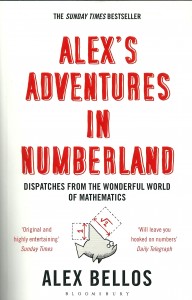The one-sentence summary
Mathematical ideas underpin everything in our lives, from the geometry of a 50p piece to how probability can help you win in a casino.
WHAT THE BOOK SAYS 
- This is not strictly a business book. It contains dispatches from the wonderful world of mathematics.
- Mathematical ideas underpin just about everything in our lives: from the surprising geometry of a 50p piece to how probability can help you win in a casino.
- Dyscalculia is the condition of number blindness, in which sufferers don’t ‘get’ numbers as fast as most of us (dyscalculics wouldn’t enjoy this book).
- By contrast, lightning calculators are people who can compute highly complex calculations at high speed without using a machine.
- People have been arguing about number systems for years – some prefer ten as a base, others twelve, and so on. (Grocers are so named because of their preference for counting in twelves, which is divisible by 2, 3, 4, and 6, and a gross is 144 – a dozen dozen).
- Tessellation is the technical term for covering an area so that no part is left uncovered – something that only regular polygons can do (there may be an example on your bathroom floor).
- In India, Slumdog Millionaire was released as Slumdog Crorepati, because they do not have the word million. Our 100,000 is their lakh, and is written with the comma in a different place: 1,00,000. Ten lakh is a million, and ten million is a crore.
- The phrase ‘lowest common denominator’ is often used to describe something basic or unsophisticated, but this misrepresents the maths since an LCD can be as high as 468. The highest common factor is better. The HCF of 13 is 1, and you can’t much lower than that.
WHAT’S GOOD ABOUT IT
- In 1972 the fist HP calculator killed off the slide rule – it cost £365, about half the salary of a junior engineer.
- Popular obsessions with numerical teasers continue unabated – sudoku, Rubik’s cube, and the Fifteen puzzle, which has one square missing in a frame and you have to get them in the right order.
- The Fibonacci sequence is recurrent, with each term generated by the values of the previous terms: 1, 2,3, 5, 8, 13, describes the breeding of pairs of rabbits, and pretty much all cell division in nature.
- You can’t square a circle – that is to measure the circumference with total accuracy – because the true number is beyond the realm of finite algebra.
- The 50p and 20p pieces are design classics – curvaceous heptagons.
WHAT YOU HAVE TO WATCH
- It has some very technical moments that are so complex you just have to move on.
